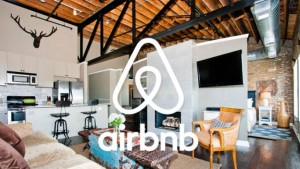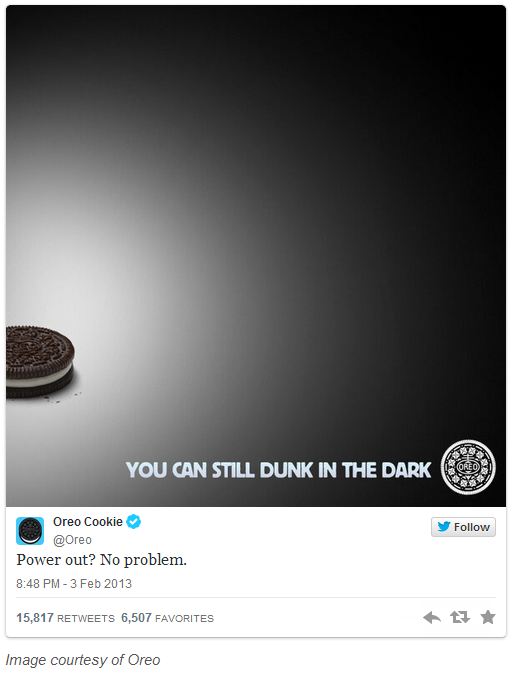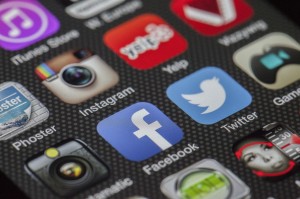5 Ways to Ease Social Media Branding Worries
The question whether or not to have a presence on at least one social media platform has become an easy one for brands – without any social media existence, a brand will be left out of one of the fastest-growing and increasingly vital aspect of a branding experience.
But now that it’s rightfully assumed that your brand will be a player in the social space, it’s also rightfully assumed there will be some trepidation. A brand, especially those newly formed or refreshed, is a delicate entity, still finding its way and looking for anything solid and safe to hold onto – and social media can be anything but those two.
One way to reassure those with worries that your brand will begin to spiral out of control the moment that first tweet is sent is to go in with a plan. Treat social media strategically, as you would any other aspect of your brand.
Social media strategies that are well-planned and well-executed can elevate your brand, exposing it to a wide audience at little to no monetary cost. It can spread your brand story in new ways and through new mediums that go beyond traditionally advertising, marketing and/or public relations.
What does a good brand social media strategy entail? Here are five key points to include in your plan to help ease the worries when taking your brand into the social media realm:
Find your brand voice.
The best brands on social media have identified their unique brand personality and voice, and incorporated that into all of their messaging. As you prepare your social media strategy, decide where your brand’s personality lies – are you witty and funny, serious and informative or somewhere in the middle? Once you have personified your brand, consistently follow that personality in your social work.
Establish a quality team.
Social media should not be considered a tertiary responsibility, destined to live on the edges of job descriptions and day-to-day priorities. As the brand is being built and the brand strategy developed, consideration should be given to those who will be tasked with social media management. Whether it’s a single person or a team of people, they are the first line of defense when easing social media worries.
Be aware.
At the end of each year, there are countless brand social media “fail” lists that are inevitably populated by brands that were unaware of their surroundings and showing their obliviousness to the world to disastrous results. Don’t find yourself on one of these lists – ensure that those in charge of your social media outlets know what is happening around them – whether it be current events, unexpected tragedies or sensitive topics – and that they know how to keep your messaging tasteful and on brand.
Stay in touch.
Hopefully, your brand will quickly gain or grow fans and followers, some of whom will want to interact. This can be a tenuous line to walk, as your brand must seem accessible and engaging while also knowing when it’s best to step away. This is likely one of the points that come up in the nightmares of brands as they are beginning in social media, but it is one that can be easily managed and have great benefit.
Don’t forget the visuals.
Social media isn’t just a verbal branding opportunity, but one for your visual brand as well. As it is with most verbal brand aspects, consistency is key – logos should be brand standards-compliant across any platforms where your brand has a presence, in addition to any pictures or videos posted. As it is with visual branding overall, it is often the first impression the audience gets of your brand, and this is especially true in the quick-glance world of social media.
Addison Whitney is a global branding firm with a passion for building strong brands.
To learn more about Addison Whitney, visit our website at AddisonWhitney.com, or contact us here.
3 Ways Social Media Can Benefit Your Brand's Image
There’s a very good chance that the first (and possibly only) interaction that your audience will have with your brand will come via social media. With the vast majority of consumers spending their time on these platforms, your social media presence could be the difference between becoming a brand that finds success and being just another brand that falls by the wayside.
How branding and social media interact is a topic that covers a number of different perspectives and points of information, but today we’re going to look at how you can impact and improve your brand’s image online.
Here are three ways that your brand strategy and social media strategy can work together for the benefit of your brand image:
1. Choose Wisely.
There are thousands of different social media platforms out there for brands to use, and that number seems to grow every day. It would be virtually impossible for a brand to even create accounts that serve all of these platforms, let alone be successful in any aspect. This is why the first step to integrating social media and branding should be to identify those specific platforms that best fit your brand’s image and brand strategy.
For instance, if you are a consumer brand with strong visual branding characteristics, then visually-heavy platforms like Instagram and Facebook will be the first stops on your social  media strategy. On the flip side, if your ideal consumer audience consists of a younger demographic, maybe LinkedIn isn’t the place to go.
media strategy. On the flip side, if your ideal consumer audience consists of a younger demographic, maybe LinkedIn isn’t the place to go.
2. Stay the Course.
Your brand strategy and branding efforts should include well-defined and relevant messaging, which should be present in all aspects of your social media work. This is not a place to try and break free of your what characteristics make up your brand – it’s actually the ideal place to further express your brand character.
This concept should expand to include all aspects of your brand, including your visual brand elements – your logos, images, etc. These are often the first point of contact with your brand, and as such should be formatted to fit the platform, consistent and on-brand across your entire social media presence. It’s not a good look when your Facebook profile picture is a partial image of your logo that doesn’t fit the image box or when you have images throughout your Instagram profile that have no connection with your brand.
Now, this doesn’t mean you can’t be creative or provide new and interesting ways to expressing your brand, but always be sure that you can connect it back to a core brand principle.
3. Think of the Big Picture.
This is an aspect of social media strategy that is often lost – it’s easy to get caught up on the post-by-post mindset, where each individual piece of content becomes its own strategy. There is often a lot of time and effort that goes into creating quality social media content (as it should be), but don’t lose sight of how your audience will connect that content with your brand.
Much like point number two, keep your brand’s overall principles and characteristics in mind and work to create content that doesn’t just show quality itself, but connects that associated quality back to what you want your brand to be.
Some of the best social media brands are the ones that follow these tips, but also find ways to put their own spin to them in order to create and post content that keeps your audience engaged and brings your brand more exposure (in the right way).
Addison Whitney is a global branding firm with a passion for building strong brands.
To learn more about Addison Whitney, visit our website at AddisonWhitney.com, or contact us here.
Gaining Brand Trust in a Share Economy
Today's post comes from guest blogger Caroline Lewis, Brand Strategy Intern at Addison Whitney
In the next 24 hours, nearly 1 million people around the globe will get in a stranger’s personal car using Uber. Over 800,000 will rent accommodations from private individuals with the help of Airbnb. Another 10,000 will lease a place for their pets to stay in someone’s home through DogVacay, and 10,000 more will hand their car keys over to an unfamiliar person using the car-sharing service, RelayRides.
Facilitated by smart phones and the internet, trusting consumers and the companies they use are considered part of the rapidly-growing “share economy,” which offers individuals the ability to exchange resources in a manner that would have been considered foolhardy just a few years ago.
The big question is: why are people placing so much trust in strangers?
This shift in consumer behavior is not caused by a business model trend, but a transformation of our society in the digital age. The economic effects of the global financial crisis of the 2000s have collided with the rise of social media, creating a culture in which we are not only driven by a desire to capitalize on unused resources, but also more open to the idea of sharing, even with complete strangers. This change has fueled an industry in which transactions rely on mutual trust and the exchanging of resources in a manner that benefits the common good.
The success of the share economy lies in how its brands cultivate trust. These brands focus their efforts on making consumers feel that they are interacting with people they can get to know, even if it is through the relative anonymity of the Internet.
Customer comments and ratings dominate web pages, creating atmospheres of credibility and trust between consumers and the brands. Many companies, such as Lyft (a transportation service similar to Uber), Airbnb, and RelayRides, recommend that users offering services connect their accounts to social media. Social media profiles reflect, at least in part, our real identities, and are therefore instrumental in building a more human persona, a strength for any brand.
The result has not only catapulted brands in the share economy space to booming success, but also changed the way that we view the strangers we interact with. Consumers are aware that they are  collaborating with real, individual people, creating a connection between brand, representative, and consumer unique to the share economy.
collaborating with real, individual people, creating a connection between brand, representative, and consumer unique to the share economy.
An Uber driver differs very little from a taxi driver in that both arrive to simply transport you to your destination. However, Uber’s consumers generally report feeling safer and more comfortable, and they are more likely to talk with drivers and sit in the front seat (or dance and sing with the driver, as seen here). With RelayRides, renters must meet the car owner to receive their keys. When RelayRides implemented this policy, satisfaction increased 40%, and users were more likely to keep the cars clean and return them on time. Interactions are between familiar faces, not complete strangers, and are beneficial to the brands, companies and individuals involved.
What does this mean for your brand?
Big or small, trust is essential. Consumers and customers are looking for innovative ways to get things done and want to trust the source – we see it in the share economy business trend, garden-to-table food trend, and home-schooling education trend. Build trust with your audience. Share feedback openly, let consumers get to know your brand ambassadors, salespeople, and customer service representatives in a real way. Let consumers be a part of the brand.
Image sources:
https://www.nytimes.com/2012/12/03/technology/app-maker-uber-hits-regulatory-snarl.html?_r=0
https://www.foxnews.com/travel/2015/04/22/10-things-need-to-know-about-airbnb-before-book/
Addison Whitney is a global branding firm with a passion for building strong brands.
To learn more about Addison Whitney, visit our website at AddisonWhitney.com, or contact us here.
Luxury Brands Leading the Way in Social Media Branding
Brands are taking full advantage of the benefits in engaging with their audience on social media, and these efforts are led by a number of luxury brands, according to a recent report by Shareablee, a social analytics company.
After analyzing over 100,000 brands and 600 million interactions, the brands that stood out included some of the most well-known in the fashion and automotive world, including Mercedes-Benz, who took the top spot and was followed in second by BMW. The fashion world rounded out the top five with Valentino, Michael Kors and Victoria Beckham all finding success in the social media realm.
who took the top spot and was followed in second by BMW. The fashion world rounded out the top five with Valentino, Michael Kors and Victoria Beckham all finding success in the social media realm.
That these brands are finding most of their successes on the more visually-based platforms should come as no surprise. The strong suits of these brands lie in their visually appealing products, speaking to a number of their brand characteristics that carry weight and recognition when seen.
This is shown in the report where the average number of brand followers on Instagram increased nearly 250 percent – these brands are taking advantage of the mainly image-driven platform that Instagram provides and showing off their products and visual aspects of their brand personas.
Additionally, social media provides these luxury brands with the opportunity to connect to a broader audience than they have potential consumers – to follow BMW on Twitter or “like” Michael Kors on Facebook doesn’t cost a penny, so although a consumer may not be in the market for one of their products, a social media engagement can still be a feasible way to connect the consumer to the brand, which is especially powerful when that brand’s persona is one that is aspirational for the consumers, like BMW, who has a high-class connotation among its fans.
From a branding perspective, this connection is vital to maintain their hard-earned brand equity, which is one of the main factors to maintaining their status among the luxury brands. Without the influence in the online and social media realms, and without the ability to market to the masses, these brands would see a serious drop in their ability to compete on the global market.
For example, take Christian Louboutin, the #6 company on Shareablee’s list. The luxury shoe designer has a brand that is respected the world over for its products, but many of its fans are likely unable to afford to purchase anything from the designer’s line. However, they can still feel the connection through social media, which drives positive brand connotations among this same audience.
For a brand, this connection with their audience and subsequent positive audience opinion goes a long way in staying among the crème de la crème of brands, a characteristic which in itself can propel a company to success.
Image Sources:
https://us.christianlouboutin.com/us_en/LouboutinWorld#opi2240509114
https://www.adweek.com/socialtimes/report-fashion-and-automotive-brands-dominate-social-media/624319
Addison Whitney is a global branding firm with a passion for building strong brands.
To learn more about Addison Whitney, visit our website at AddisonWhitney.com, or contact us here.
How to Leverage Social Media for Your Brand
There are a number of social media best practices to keep in mind related to leveraging social media for your brand, many of which center around the idea that keeping the “social” in social media, an often-forgotten but very important aspect.
Let’s start there – social media, at its essence, is a conduit for conversation. But many brands forget this aspect of social media marketing, and treat their channels as one-way communication platforms, pushing their messages out and  virtually ignoring all incoming communication from their fans.
virtually ignoring all incoming communication from their fans.
Actively engaging its customers is one way to personify your company’s brand, giving it more of a “human” identity rather than one of a faceless corporation. This humanization of a brand has been shown to play a positive role in potential consumer decisions.
Engagement can be both positive and negative. Positive posts can include pushing out conversational content and responding to positive feedback from fans. But responding to negativity is also important, if not more, to effective social media engagement. Responding to negative posts in a timely and polite manner can help calm the poster, and also prevent any potential crisis from forming over a negative situation.
A great rule of thumb to keep in mind is the “one-in-seven rule.” As discussed by Chris Litster of Constant Contact, this rule states that companies should only overtly promote their business in one of every seven posts. The remaining six should be focused on valuable content sharing for their audience. Pairing promotions with solid content extends the reach and engagement level of your posts with your audience.
Generally speaking, people pay more attention to content that interests them than they do standalone promotions, which tend to fly more under the radar of the audience. If you follow this rule, even with some leeway, your brand will be more recognizable to the audience due to your habit of sharing great content. This way, when you do post a promotional message, it is less likely to be overlooked.
Social media best practices tend to revolve more around what a brand shouldn't do rather than what they should.
First, a word of warning when creating posts centered around social media trends – proper research is necessary to avoid creating a crisis for your organization. For instance, in 2012 the hashtag #Aurora was trending because of a mass shooting that occurred at a midnight showing of The Dark Knight Rises in Aurora, Colo. The day after this tragedy, the company Celebrity Boutique tweeted the following message: “Aurora is trending. It must be because of our Kim K. inspired Aurora dress”
Following the understandable and considerable uproar, the company released a statement saying they did not check what background of the social media trend for “Aurora” was prior to composing the message. Had the company done their due diligence and performed seemingly simple research, they could have avoided this unfortunate situation rather easily.
Additionally, the goal shouldn't revolve around “going viral.” Taking a viral marketing focus has such a small rate of success that attempting to find positive ROI will prove difficult. There is a reason why viral posts carry the social and cultural weight they do – the attention comes due to their rarity. Just like everyday occurrences don’t warrant substantial news coverage, the dime-a-dozen nature of viral marketing attempts fall by the wayside unless they contain a truly memorable and differentiating aspect.
When used correctly, social media marketing can be a valuable tool to leverage your brand. In today’s society, a company that knows how to use this resource to its advantage holds an important leg up on the competition, and puts itself at the forefront in the minds of consumers.
Sources:
https://mashable.com/2012/07/20/celebboutique-misguided-aurora-tweet-sparks-twitter-outrage/
Adidas vs. Nike, Which Brand Really Won The World Cup?
Adidas vs. Nike, Which Brand Really Won The World Cup?
Guest Blogger: Lindsey Freedman
The FIFA World Cup, like all large scale sporting events, is every brand’s dream platform. It gives a brand the potential to be recognized on a global platform while influencing the opinions of millions. The 2014 FIFA World Cup was no different-over $400 million were spent on marketing during the tournament.
What makes the 2014 World Cup so different than past years is that brands have to focus on reaching target audiences across multiple platforms. Jason Klein, ListenFirst’s co-founder and Co-CEO, said, “More than ever before, this year's World Cup forced brands to think beyond a single platform and instead take a cross-channel approach to engaging fans throughout the tournament."
Adidas and Nike were the most competitive brands across the multiple online platforms during the 2014 World Cup, despite the many sponsors that included McDonalds, Coca Cola and Sony. What’s so interesting about Adidas and Nike is that Adidas was a 2014 World Cup sponsor, while Nike was not.
Below are some notable reasons why Adidas and Nike were the “winning” brands of the 2014 FIFA World Cup:
Adidas:
For the past 66 years, Adidas has been the leader in soccer products. So, their World Cup sponsorship makes sense for the brand. Adidas was no doubt the most notable sponsor of the World Cup. Their signage and logo were prominently displayed throughout all the stadiums. They even inspired athletes with their “Now or Never” signage that intensified throughout the matches. Adidas also created a Twitter campaign for @Brazuca, the 2014 FIFA World Cup official match ball. Throughout the tournament the account grossed 3.5 million followers. Additionally, both World Cup finalists, Germany and Argentina, were sponsored by Adidas.
Nike:
Nike, on the other hand, was not a 2014 World Cup sponsor but their presence was well known. Their brand strategy was to sponsor multiple teams and distinguished players for the World Cup. However, Adidas happen to pick the right teams to sponsor in terms of the World Cup final. Furthermore, Nike’s “Winner Stays” video, that featured multiple renowned athletes such as Cristiano Ronaldo, Wayne Rooney and Tim Howard, reached more than 4.2 million views.
ListenFirst, a social analytics company, tracked the growth of brands during the course of the tournament through impacts on social communities, including Facebook, Twitter, Instagram and Youtube. Adidas scored a 90.4 while Nike scored a 83.4 indicating that both brands enjoyed substantial and comparable growth throughout the 2014 World Cup. According to the data Adidas was the most talked about brand on Twitter, whereas Nike scored big on Youtube views.
But overall, if a winner had to be declared - we’d say we have got a tie. Despite the millions of dollars spent on Adidas and Nike’s campaigns, they both scored a larger audience that they will be able to influence year-round.
On a side note, Tim Howard, USA goalie, has become a powerhouse brand. He gained over half a million Twitter followers during the World Cup and at one point he was mentioned 55,187 times a minute during the match against Belgium. Howard is in talks with several brands for multi-million dollar sponsorship opportunities, according to a recent interview with ADWEEK.
The FIFA World Cup is definitely one of our favorite events. No one wants to wait another four years, but we look forward to what brands bring to the 2018 World Cup in Russia.
###
Sources:
"The 10 World Cup Sponsors That Grew the Most in Followers, Fans and Subscribers"- Ad Age
"Adidas won the World Cup battle, but Nike is winning the soccer wars"- Quartz
"Three Brands That Won At The World Cup" - Forbes
"World Cup Hero Tim Howard Talks About Sudden Fame Being a role model is part of the package" - ADWEEK
Real-Time Marketing: Making It Work For Pharma Branders
Real-Time Marketing: Making It Work For Pharma Branders
Let’s start by creating a baseline for this topic. What is real-time marketing (RTM)? Of all the attempts to define this marketing strategy, a blog post from Evergage sums it up quite nicely: RTM is “…the practice of brands engaging their audience via content, advertising, and product placement that is relevant to a specific current event or cultural happening. The content is most often in the form of a “meme” or graphic advertisement shared through social media channels.”
An easy example? Oreo’s infamous tweet during last year’s Super Bowl.
When we start to look at RTM (sometimes referred to as viral marketing) through a healthcare lens, we need to dig a bit deeper. Pharmaceutical branding is inherently complicated. The industry is overflowing with rules, regulations and guidance – all of which make marketing a bit challenging. And because of these parameters, real-time marketing, as explained by Evergage, seems somewhat elusive.
But, it really is all about perspective. Mashable frames it up a bit differently.
“…real-time marketing success starts with a brand's day-to-day activity, not a single well-timed moment. Don't swing for the fences your very first time out. Implement small, real-time marketing initiatives on a regular basis; patiently teach your audience they can expect timely, relevant communications from your brand. Then, when a really big opportunity arises, your team is poised and ready to make the most of it.”
When considering in Mashable’s frame of reference, RTM and pharmaceutical branding seem to better coexist. This tactic becomes less about a cute response and more about being responsive – and proactively so. Pharmaceutical companies face an unfathomable number of questions from a variety of audiences – and comprehensive, strategic marketing efforts can go a long way to answering a lot of them before they’re even asked.
Pharma branders can utilize RTM by identifying opportunities that work within the confines of their industry – and by viewing those parameters as guideposts, rather than obstacles. A program like TEDMED is a great example of such an opportunity TEDMED brings together like-minded industry professionals and gives them a variety of platforms to promote their brands. Brands can use all of the tools of RTM to tell their story while they attend (or even just live stream) this kind of conference.
And, in order to succeed at RTM, you have to get comfortable with learning as you go along. The fundamental tactics of this type of strategy are content, social channels, mobile and video. Can’t focus on all four areas? Then specialize in one and grow from them. But, the key to real-time marketing is responsiveness – build a program around that and you’re more than on your way to a successful campaign.
# # #
Sources
“Real-Time Marketing Isn’t What You Think It Is,” Evergage.
“Someone Give This Oreo Employee A Raise,” Mashable, Feb. 3, 2013.
“4 Steps to Explosive Real-Time Marketing,” Mashable, July 15, 2013.
“Real-Time Marketing Opportunities in Healthcare?,” brandgagement, May 7, 2013.
“2014: The Year of Digital Pharma?,” Pharmaceutical Executive, Jan. 23, 2014.
Social Media: How Can It Build Your Brand?
Today's guest blogger is Ashley Wiederhold, Project Manager here at Addison Whitney!
Social media is just one of many double-edged swords in the marketing arsenal. On one hand, when done right, social media marketing is a highly effective way to appeal to a target audience. On the other, the wrong approach to social networking can be disastrous. The key to leveraging social media platforms to build your brand lies in one simple task: understand your brand.
This may seem obvious, but you would be amazed by how many companies are engaging in social media marketing campaigns that detract from the brand they’ve established. While using Facebook, Twitter, LinkedIn, and the like may seem easy, it’s actually quite a strategic activity for companies that do it right.
So, how do you go about understanding your brand? The key lies in doing a bit of soul-searching about what your brand stands for. If you’re a new company that has just gone through the name or logo development process, you should have a strong knowledge of your brand’s mission and values. If not, take the time to answer the following questions, which were inspired by an article published by the Huffington Post:
- What does your brand look like? This means surveying the graphics that your company has developed to represent it, such as the logo. Additionally, gather details about your brand’s color palette, font, etc. It’s a great idea to create a brand standards document where you can keep all of this information (and distribute internally to ensure brand continuity).
- What does your brand sound like? Believe it or not, your brand has a voice. The point of social media marketing is to amplify this voice by proclaiming it from social networking platforms. To successfully do this, though, requires consistency. The posts that are published on Facebook should be consistent in tone. Additionally, this tone should be carried across platforms, such as onto Twitter or Pinterest.
- Why is your brand online to begin with? The simple answer to this question is to increase awareness. You want to increase your revenue by attracting new customers, and the only way you can do that is through an increase in visibility. The Internet opens a very big door with this regard, but your brand will only make it through the door successfully if you understand the purpose behind your social media activity. Do you want to inform your target audience? Do you want to keep people entertained? Keep this goal in mind when creating social content.
Source:
Huffington Post article
Birchbox Delivers Brand Satisfaction

They say good things come in small packages. With products ranging from Luna bars, perfume, earbuds, green tea and mascara, brands are seizing the opportunity to distribute product samples in a little package called, Birchbox.
Birchbox.com, is a subscription-based service that delivers a monthly box of beauty samples to your door for a small fee of $10 a month. This NYC centered business was founded by Katia Beauchamp and fellow Harvard alum Haley Barna in 2010. Birchbox chooses products based on a beauty profile you complete when you sign up. From a brand’s perspective, this is a way to upsell existing customers and to acquire new customers by putting the product in front of them that they may not otherwise have been exposed to. A recent box brought me a fun colored nail polish, Kate Spade perfume and a delicious-smelling hand cream. I was so excited to receive my box of goodies, it felt like Christmas as I opened it! In my opinion, Birchbox satisfied me as a customer as it delivered products that I currently use and a few I hadn’t experienced before. I loved the hand cream and bought it on the Birchbox website once my sample size diminished. Bottom line, both Birchbox and the brands benefitted from my purchase that day!
Birchbox has been on the market for two years and has seen rapid growth, both with new female consumers and new business partners, such as major brands like Kiehl’s and NARS. It offers a way for big brands to get their products into the hands of young, e-happy customers with money to spend. Over 200 brands have joined Birchbox because they see the benefit of pushing their products to female consumers each month. Brands such as Elizabeth Arden are scrambling to give away samples to Birchbox’s more than 100,000 subscribers as they see the value in distributing their products to females who love a new beauty item to brag about.
The startup has been so successful gaining female consumers that Birchbox Man launched in April 2012. Now, guys can sign up and, for $20 a month, get their own “Birchboxes.” Products shipped in the boxes will include shaving cream, cologne, headphones and watches, with more lifestyle and tech items planned for the future.
Birchbox is a place where brands can find new customers and engage with them in a very intimate environment-their homes. This subscription-based system introduces customers to small and large brands, helps smaller companies start to find their consumer base, and larger companies find new audiences.
For a small fee and new products shipped to your door each month, would you sign up for Birchbox?
Mud Runs Enable Brands to Broaden Reach

Traditional running races are a thing of the past. The new craze is to throw some obstacles in the way. Like a mud pit, barbed wire, a climbing wall and a tangle of ropes. Then give these new obstacle course races gritty names like Warrior Dash and Tough Mudder to really intimidate people to sign up! Not only are people getting excited to participate in mud runs but brands are seizing the opportunity as well.
Obstacle races combine mud and trail runs with boot-camp obstructions and even mind games, all designed to result in mental and physical collapse. Last year in the U.S. roughly a million people signed up for events in the four most popular series: Warrior Dash, Tough Mudder, Spartan Race and Muddy Buddy. People now travel around the country and shell out money to willingly run these adventure races with mud crawls, fire pits, ice-cold showers and electric shocks. I have to admit when I looked at the Warrior Dash event video on their website, I instantly felt nervous yet fired up seeing people drenched in mud, climbing up wooden walls and jumping over fire. However, brands are embracing this new trend with nerves of steel.
Brands view this as an opportunity to get their product and showcase their company in front of an audience of young, active professionals. For example, the Windham, NY Warrior Dash in 2012 partnered with PERT Plus, the hassle-free shampoo brand and had a “Sudz Zone” shower trailer in the post-race festival area. With shampoo samples being provided to participants, brands have additional exposure for race attendees to use first hand and experience the product for themselves in hopes that participants will recall their experience next time they’re looking to buy shampoo. After all, if it can clean you up after one of these races it’s got to be good.
Brands also can gain exposure by having on site signage and tent space where they can directly connect and build relationships with existing as well as new customers. A few years ago I participated in an obstacle race and was immediately handed free apparel and samples provided by the sponsors that were at the event. They say it’s the little things in life and by getting a free koozie, a t-shirt and beer, not only was I benefitting from my new free stuff but I was also being exposed to a number of new brands that I might not ordinarily come in contact with, and I was one happy girl!
With mud runs and other adventure races gaining popularity, it’s no wonder brands are seizing the opportunity to sponsor races for additional exposure. As I write this, I’m already nervous and excited for the North Carolina Warrior Dash in 2013 I just signed up for! Obstacles, beer and bragging rights, do you have what it takes?






